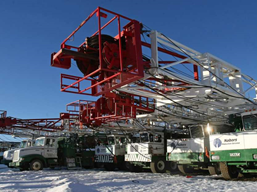Is Your Company Ready for The New Reality?
Since August, 2015, when VMA’s 2016 Market Outlook event was held, there have been a few more bumps in the economic road for valve, actuator and control manufacturers, their suppliers, distributors and end users.
#actuators #VMAnews
Oil Prices and Climate Change
According to professional services giant PwC, the third quarter of 2015 saw upstream profits wiped out after a record $22.9 billion in income a year earlier. In response, these companies are slashing outlays to the tune of an expected 30% in 2016. Wood Mackenzie reported earlier this month that U.S. oil companies have scrapped about $380 billion of projects since oil prices began declining and about $170 billion of the projects were meant to begin production in 2016-20. Worldwide, oil companies are negotiating aggressively for 10% to 30% discounts from oil-field service providers, and, according to recent company announcements more than 200,000 employees have been or soon will be let go.
While competition, a glut in supply and drop in demand are seen as the reason for the drop in prices now, PwC analysts suggest in an early 2016 report that these are not the only factors affecting the oil and gas industry. The report points to the fear of climate change and ongoing efforts to reduce CO2 emissions as concerns that will affect this industry far beyond the current cycle.
In June, 2015, G7 leaders issued a communiqué calling for the phasing out of petroleum-based energy by the end of the century. This was followed by a resolution by 200 nations at the COP21 summit in Paris agreeing to a goal of limiting global temperature increases to less than two degrees Celsius above preindustrial levels and to reach net-zero greenhouse gas emissions in the second half of the century. Basically this means there is now a collective commitment by nations to move away from fossil fuel production and consumption. What effect that will have on energy producers and their suppliers over the long term is yet to be seen.
Mergers & Acquisitions
According to another report from PwC US, mergers and acquisitions (M&A) for the last quarter of 2015 in the U.S. oil and gas industry reached the lowest levels of fourth quarter deal activity in five years. Analysts suggested that this could be because companies are operating in survival mode and saving cash to realign strategies and business models.
Joe Dunleavy of PwC is quoted as saying, “The drop in commodity prices also shut oil and gas companies out of the capital markets in the fourth quarter. Right now, the priority for many oil and gas companies is to work with lenders to revise the repayment terms of their debt agreements.”
Construction
During Industrial Info's most recent Industrial Market Outlook, held earlier this month, presenters predicted a 4.8% drop in spending for project construction starts in 2016 as project timelines are pushed back to reflect the fall in energy prices and a softer world economy.
Michael Bergen, executive vice president of analytics for Industrial Info, said the U.S. is expected to reduce crude oil production by 800,000 bpd in 2016. This will have an impact on crude oil pipeline projects as well as exploration activities. Bergen pointed out that the removal of the ban on U.S. oil exports came five years too late. "Back when we were at $100 per barrel that was probably the thing to do," he said.
Canada, however, is not faring as well. In 2015 there was a 44% drop in project starts and Canada’s capital spending growth is expected to remain flat in 2016. Canadian oil producers have taken a huge hit, leading to the expectation that drilling in Canada will decline by about 15% in 2016. That could result in job losses in sectors such as transportation and equipment that supply the resource sector, and has already affected consumer spending and housing markets.
Manufacturing
The mid-January 2016 report from MAPI (Manufacturers Alliance for Productivity and Innovation) suggests that the first quarter of 016 will be challenging for U.S. manufacturers. Slowing growth in China and the implosion of the stock market there is reflected in volatility in U.S. equity markets, so manufacturing is expected to stay flat according to MAPI’s projections.
That sentiment was echoed in a recent webinar held by Modern Distribution Management, when one of the presenters said, “The world is awash in too much of nearly everything.” As a result, demand for everything is down, so industrial manufacturing is decelerating, which puts deflationary pressures on manufacturers and distributors.
The Silver Lining
While there is cause to be concerned in some sectors as 2016 begins, there is still much to be counted as positive in the economy, according to Alan Beaulieu, president of ITR Economics, who delivered the keynote at the Heating, Air-conditioning and Refrigeration Distributors International conference last month. Despite a host of concerns ranging from the economy to oil and gas, to China's instability, he told attendees to look for a turnaround in the second quarter, that all of these factors are "on the verge of improving," he says.
The U.S. GDP is still climbing, unemployment is at prerecession levels and last month the Federal Reserve raised the federal funds interest rate for the first time in nearly seven years.
In more positive news, Industrial Info Resources has reported that the meat and poultry segment in the U.S. is seeing a rise in capital expenditures for new plant construction, expansions and equipment upgrades. More than $5.17 billion in project spending is in the planning, engineering and early construction phases. Individual projects range in value from $1.4 million to $270 million.
From early 2015 to November 2015, construction had already started on projects with a combined total investment value of $1.8 billion. Forty-two new plants are being planned, including a record-breaking $270 million pork-processing plant in Iowa.
In what may be considered another positive factor, it was reported in the Russian news agency RIA Novosti and in Reuters that Nikolai Tokarev, the head of Russian state oil pipeline monopoly Transneft says talks on output cuts are planned with Saudi Arabia and OPEC.
Whether this will do anything to prop up the declining oil prices is yet to be seen, but some analysts believe it could be a positive sign.
While low oil and gas prices pose a negative drag on the economy, some are finding the positives in it, from lower transportation costs to low fuel prices keeping "full-size SUV and truck sales at high volumes," according to a plastics & rubber products executive in the ISM Report on Business.
Non-residential construction is looking good and commercial real estate loans are still positive. According to presenters at the MDM webinar, multi-family housing is currently the strongest construction sector. Companies with U.S.-centric drivers such as maintenance and construction are also healthier than manufacturing selling outside the U.S.
Prepare to Change Focus
During the MDM webinar in January, Tom Gale, publisher at MDM, pointed out that it’s important to remember that disruptive cycles aren’t new. “The impact of what’s taking place in technology, globalization, and many other areas accelerate the rate of change. But the fundamental issue… is how companies are changing their capabilities to create value for their customers in spite of what’s taking place in the local and global markets.”
While Gale was specifically addressing distributors, analysts at PwC pointed out in their reports that many companies are using the same business model that worked years ago, but that is not going to work now.
For oil producers and suppliers including valve manufacturers, that may mean preparing for a future where fossil fuels will decline in use. The PwC report suggests that opportunities for stability and growth in the energy sector may in fact be connected to adjusting the business model to accommodate more biofuels and emission-abatement technologies.
Additionally, manufacturers and distributors must be customer-centric and be able to identify more closely their customers’ purchasing and buying behavior.
Companies who invest in training and talent and adapt digital platforms and e-commerce to get ahead of the competition during the down times will have a much better recovery and be able to ride out any future disruptions more easily.
Kate Kunkel is senior editor of VALVE Magazine. Reach her at kkunkel@vma.org.
RELATED CONTENT
-
Beauty or a Beast? Using NDE on Valve Components
When it comes to valves, “beauty is only skin-deep” is often a true statement. Since Superman and his X-ray eyes don’t really exist, there is no way to verify the quality of a valve or valve component just by looking at it.
-
An Overview of ASME B16.34-2017
The content of American Society of Mechanical Engineers (ASME) Standard B16.34 is essential to those who deal with flanged, threaded and welded-end valves.
-
DBB and DIB: Which is which?
The term “double block-and-bleed (DBB)” carries a lot of misconception when it’s used to describe valve functionality.









 Unloading large gate valve.jpg;maxWidth=214)


